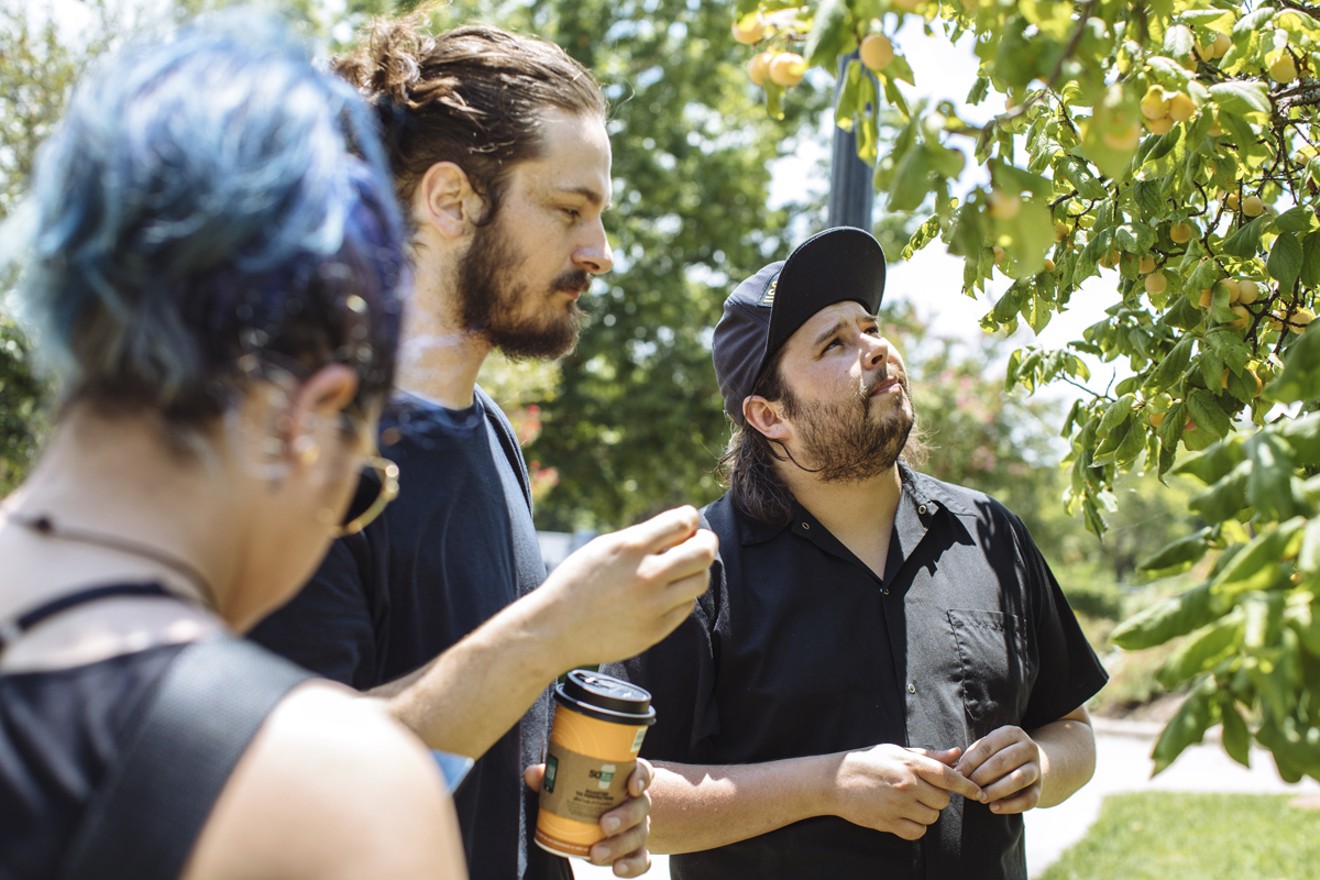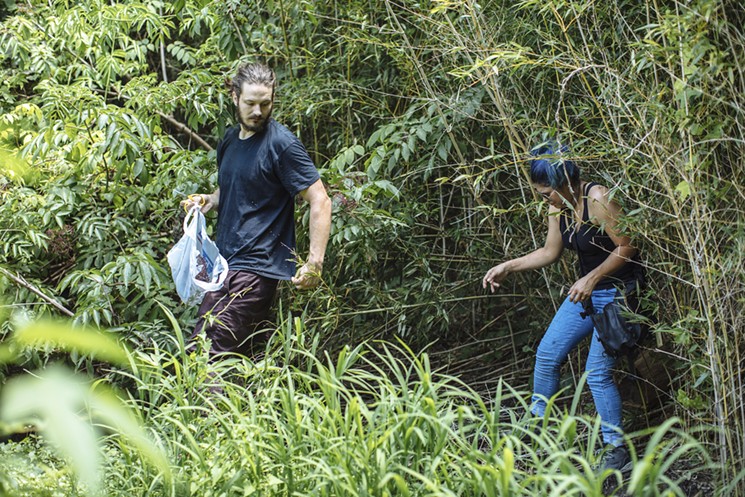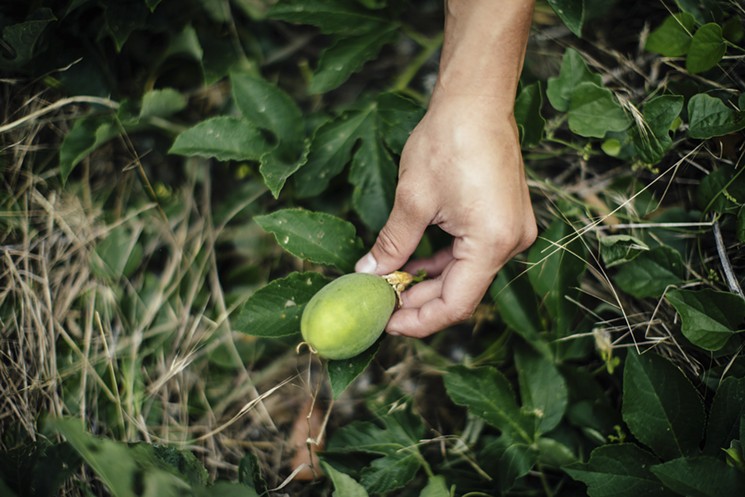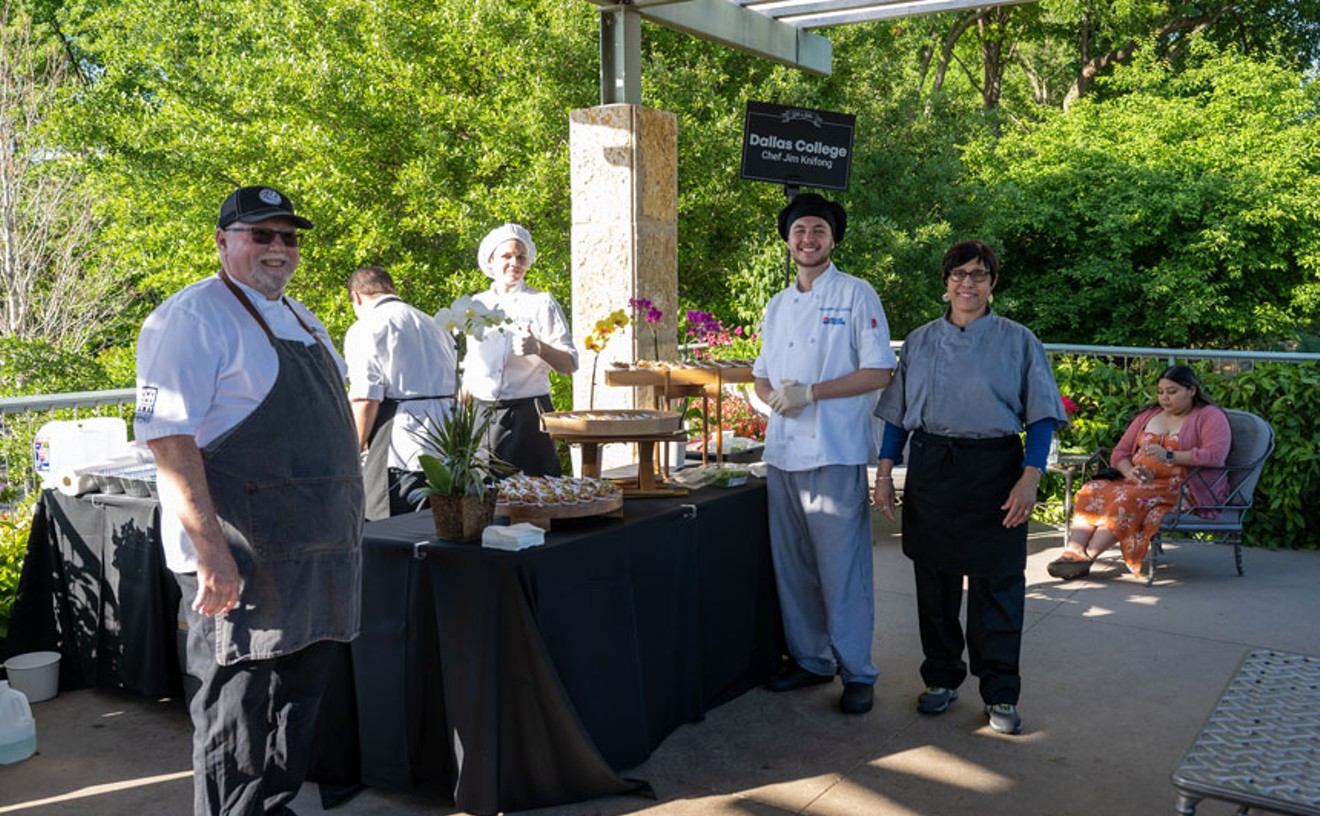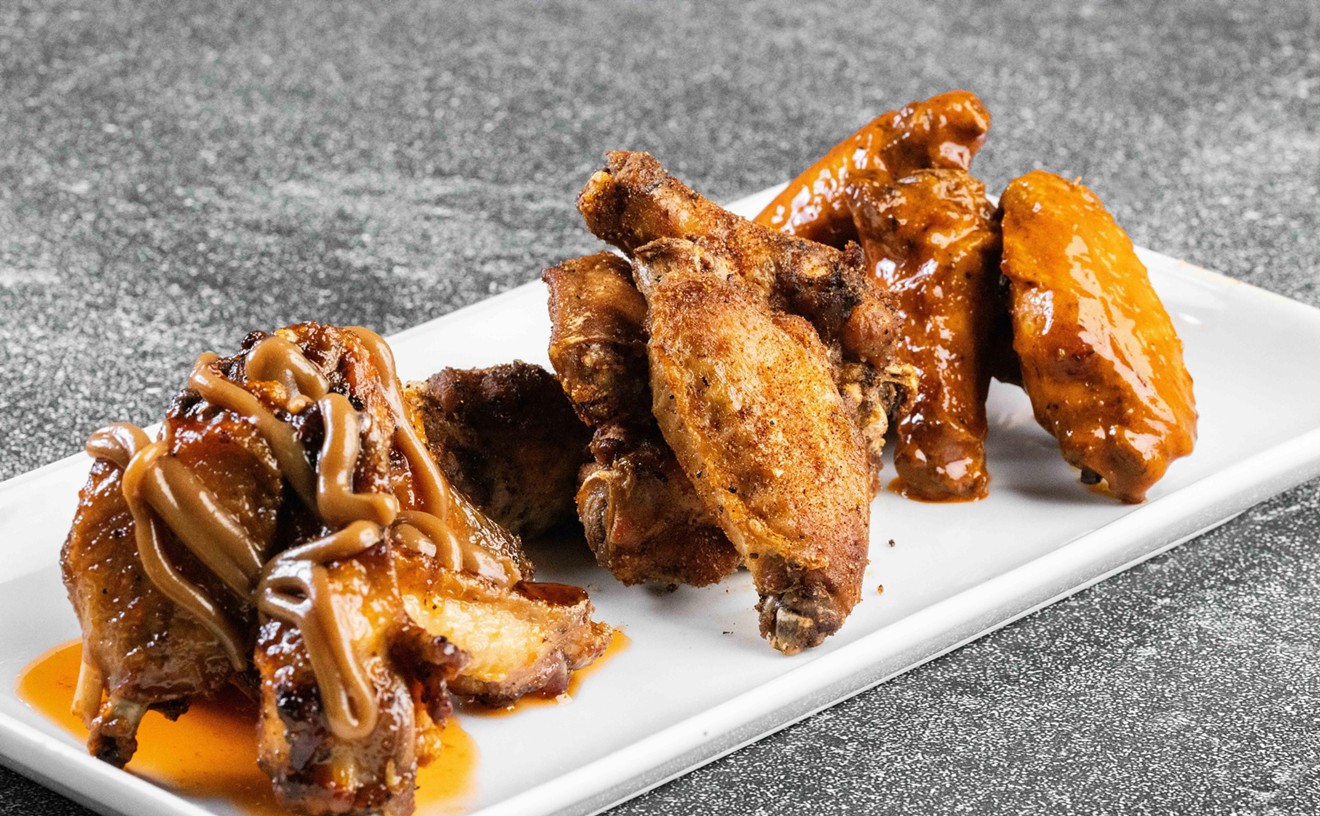It’s strange to think that everyone here does this of his or her own free will. At least it seems strange until they spot it: A few leaves pushed aside, between some brambles and thorns, a perfectly plump bunch of elderberry reveals itself. A few snips of scissors later, and half a shopping bag is filled with the purple fruit, ready to be taken back to a table in the city. It will soon be cleaned, processed and used in a bounty of dishes. It will be steeped in teas for sous vide meats, crushed for jams and preserves, soaked and pickled into a zesty garnish for multiple dishes.
These foragers aren’t the hippies of yesteryear. They are modern-day chefs, looking for the highest quality ingredients. And when store-bought just isn’t cutting it anymore, there aren’t many options but to go out and search for produce with their own hands. These chefs are returning to the fields and forests to stand behind the statement of "hand-picked" ingredients in order to bring something to their dishes that just can’t be bought.
Foraging for ingredients isn’t a new concept in Dallas, especially among certain chefs who have always been particular about sourcing, but it is a small, tightknit community. Most are self-taught or raised with an ambitious spirit for foraging. Some teach classes; some just graze while out in nature. There is no single foraging hub in Dallas, so many have to form their own groups. It is a veritable free-for-all with the spoils going to the most adventurous.
One of these small groups is led by chef Misti Norris. A butcher, a former chef at Small Brewpub and now a guiding hand in the world of foraging, Norris is lovingly referred to as the "Foraging Godmother" by chefs Brock Middleton (Mirador) and Joshua Harmon (Junction Craft Kitchen), among others. Norris leads a small culinary team of foragers who supplement their menus with wild ingredients that many would walk right past on a stroll through the park.
The team loads up with scissors, strong shoes, bug spray and plastic shopping bags. Unlike a grocery store or product delivery, this produce section is a much bigger hassle. Thorns, tripping roots and biting insects are everywhere, but this challenge only pushes the foragers further. Being in the thick of it, whether it’s in the middle of the dinner rush or in the tangled brush, is the type of high-stress environment that keeps them at their peaks. With their necks strained down, scanning for the right vegetation, they resemble more of a monk caravan than a group of hungry chefs.
It’s much more fruitful than expected, literally and figuratively. On a foraging expedition this time of year in Dallas, you can expect to find a huge variety of ingredients, assuming you know what you’re looking for. Passion fruit, sunflowers, marigold, dewberry, various mustards and leafy greens are all on the menu.
“So long as you keep your eyes open, you have no idea the stuff you can find.” – Misti Norris
tweet this
“So long as you keep your eyes open, you have no idea the stuff you can find,” Norris says, opening a mysterious pod of purple berries and taking a bite.
What did she just bite into? “I have no idea, but it’s sweet, so that’s a good sign,” she says.
Norris is an experienced forager; those interested in sourcing their own wild ingredients should err on the side of caution and ID plants before taking a bite, says Mark Vorderbruggen, the founder and head of Merriwether Foraging Texas, one of Texas’ largest foraging communities.
“The trick is to identify what plants are around you," he says. "Figure out what those plants are, then Google or use an ID book to see if they are edible.” He suggests starting nearby, even in your own yard. "You’re starting with the food right around you," he says.
Vorderbruggen, a chemist with a doctoral degree by trade, grew up with foraging as a necessity, a remnant of harder times created by the Great Depression, when the only food to be had were the plants growing wild near him. He has since gotten involved in foraging less for sustenance and more for education and as a labor of love.
Vorderbruggen teaches edible wild plants classes at the Houston Arboretum, and he's seen a demographic change over the years.
“Whereas it used to be mostly hippies and the survivalist types, now about a third include foodies and bartenders," he says.
Once considered a day-off hobby, foraging is becoming a bigger part of chefs' ingredient sourcing — but there are challenges. A slight bruise on grocery store grapes may mean they were mishandled during shipping, but a similar-looking bruise on wild grapes may mean internal mold. Sumac, a commonly found berry, may have a bit of white powder near the base, which needs to be thoroughly cleaned before use. It is a mildew that can cause gastrointestinal issues.
The location of foraging can also affect the safety of a wild haul.
“Is it growing near somewhere unsafe? Locations with pollution in the soil can be picked up,” Vorderbruggen says. Plants such as fennels are known for sucking up pollutants from the soil if they’re present, and they can remain in the plant even after a thorough washing.
Even for those armed with ID books and experience, there is some inherent risk in foraging. Several years ago, a simple misidentification of what Norris believed was an oyster mushroom left her violently ill for about two hours. It happened a long time ago, Norris says, and she's much more experienced now — but it's a bold reminder as to why foraging chefs all share the same general rule: Don’t mess with wild mushrooms.
But how does one find out what is available or safe to eat? Most everyone in the community agrees: The internet is a powerful tool. The first few foraging trips shouldn’t be about making the world's freshest salad but about learning how to work with what's around you.
Our small foraging group didn’t just walk out into the hot Texas sun one day, looking for edible foliage. Middleton and Harmon only started tagging along with Norris in the past year, soaking up as much knowledge as possible along the way. Norris has been foraging since childhood, but she doesn’t claim to be an expert.
“It’s a live process,” she says. “We are always looking up something new.”
Vorderbruggen suggests tagging along with a veteran forager on early expeditions — and being aware of local laws.
"In the state of Texas, it is illegal to take plant material from public property or private property without permission,” he says, a fact confirmed by Dallas police.
While a novice with good intentions who forages on the wrong patch of property may not wind up in much trouble, this is Texas, where trespassing laws are clear, and armed landowners are in no short supply. Checking with the property owner of the land you intend to scavenge on is always a good idea, and being respectful of the land, regardless of the owner, should always be a priority.
“Only take what you need and not much else,” Middleton says. Starting off with locations near your house and expanding from there while obtaining necessary permission is your safest bet. Chances are, most property owners wouldn’t mind a couple of picky chefs pulling their weeds for free.“The kind of lifestyle some kids have makes them afraid of nature: Don’t eat this or you’ll get sick; don’t touch that — it's poisonous. If you’re afraid of nature, you won’t protect nature.” – Mark Vorderbruggen
tweet this
The group typically calls ahead and checks out areas near White Rock Lake, as well as Cedar Ridge Nature Preserve, where they have to sign in before foraging. They also search their neighborhoods and the borders around local farms, with permission, but each trip is subject to the whims of Mother Nature. Some locations, positively lush for the taking one week, may be barren the next.
“You have to leave some of what you forage behind for other foragers, for them to repopulate or whatever," Harmon says. "But sometimes you go out one week and see like 100 pounds of something, and you only take like 2 pounds, and then a couple days later you come out and it’s all totally gone, and you just go, damn. I should have taken more.”

The chefs create a spread of dishes using foraged ingredients.
Kathy Tran / wood board courtesy Wright Edge
“The young cook is much more ingredient driven, and one of the best ways to get good ingredients is to get them yourself," he says. He believes "the sum is greater than its parts," and his cuisine certainly shows it.
Middleton is known to use pink thistle by the fist-load in various teas and broths and for deep-frying whole, unopened sunflower bulbs for a crispy garnish. Wild mustards, clovers and sorrel find their bitterants blanched away and are placed lovingly atop dishes at Mirador. Norris and Middleton use their pickings in dozens of ways, from vinegar-pickled dewberry to confit sunflower, with jams and preserves of all types paving the way. Even plants typically considered to be weeds have a purpose.

Sunflower, sumac, elderberry, bee balm, marigold, mustard leaf and dewberry are used in the plating.
Kathy Tran / wood board courtesy Wright Edge
“It’s important to teach kids foraging,” he says. “The kind of lifestyle some kids have makes them afraid of nature: Don’t eat this or you’ll get sick; don’t touch that — it's poisonous. If you’re afraid of nature, you won’t protect nature.”
How we raise the next generation of children who will become the chefs of our future will ultimately decide the fate of foraging.
For now, these chefs are always searching to validate that these excruciating trips are worth it. Even with the sweat, bug bites and constant thorn pricks, it's become an important part of their food ethos.
“It pushes a chef in a direction they otherwise wouldn’t go in," Middleton says.
Foraged ingredients do more to a dish than just give it a pop of seasonal color. They show that the chef who made your food is willing to suffer, even a tiny bit, for the craft. It shows true dedication to the ingredients, the humble building block of the greatest meal you’ll ever have.

